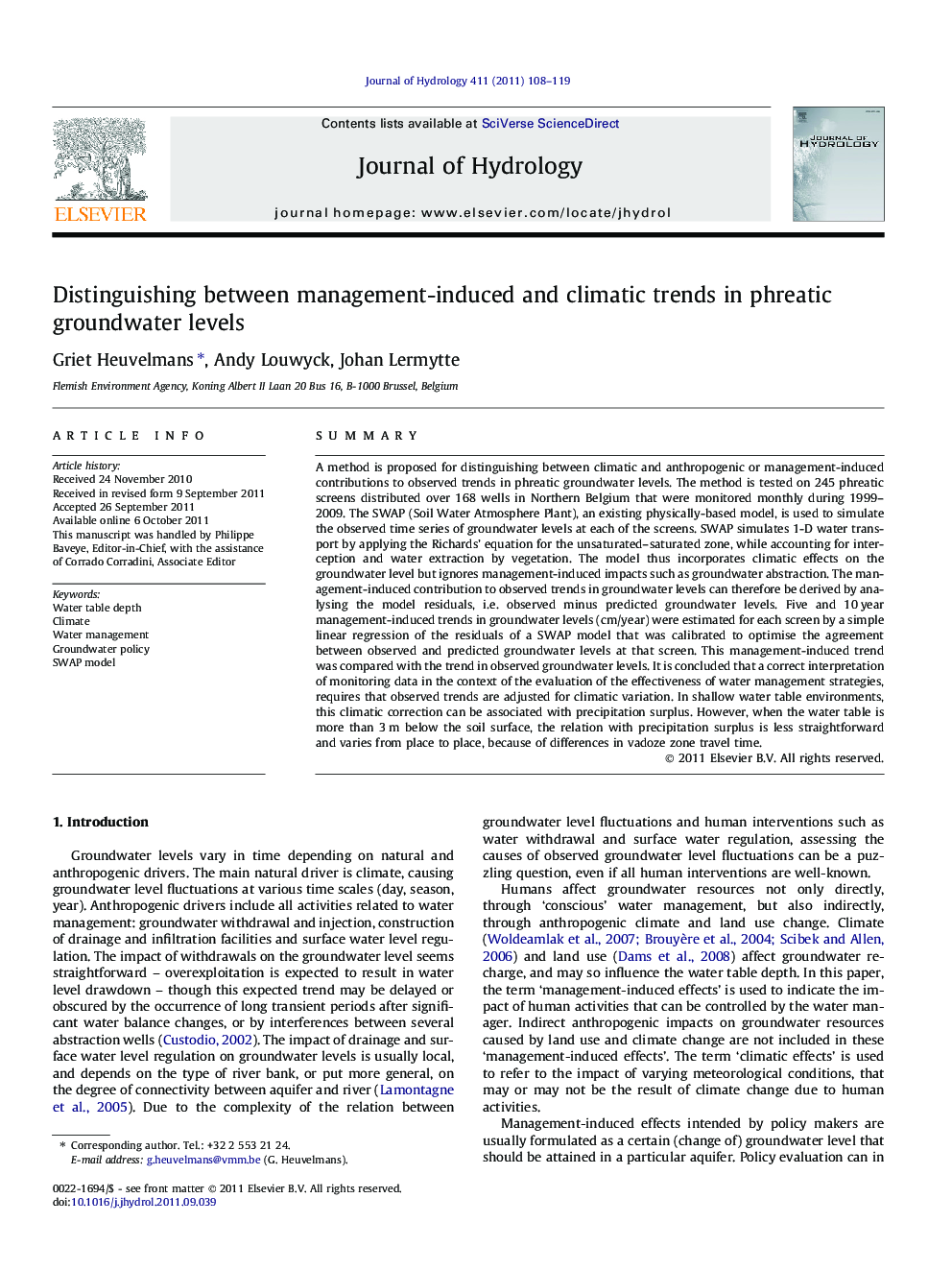| کد مقاله | کد نشریه | سال انتشار | مقاله انگلیسی | نسخه تمام متن |
|---|---|---|---|---|
| 4577350 | 1630007 | 2011 | 12 صفحه PDF | دانلود رایگان |

SummaryA method is proposed for distinguishing between climatic and anthropogenic or management-induced contributions to observed trends in phreatic groundwater levels. The method is tested on 245 phreatic screens distributed over 168 wells in Northern Belgium that were monitored monthly during 1999–2009. The SWAP (Soil Water Atmosphere Plant), an existing physically-based model, is used to simulate the observed time series of groundwater levels at each of the screens. SWAP simulates 1-D water transport by applying the Richards’ equation for the unsaturated–saturated zone, while accounting for interception and water extraction by vegetation. The model thus incorporates climatic effects on the groundwater level but ignores management-induced impacts such as groundwater abstraction. The management-induced contribution to observed trends in groundwater levels can therefore be derived by analysing the model residuals, i.e. observed minus predicted groundwater levels. Five and 10 year management-induced trends in groundwater levels (cm/year) were estimated for each screen by a simple linear regression of the residuals of a SWAP model that was calibrated to optimise the agreement between observed and predicted groundwater levels at that screen. This management-induced trend was compared with the trend in observed groundwater levels. It is concluded that a correct interpretation of monitoring data in the context of the evaluation of the effectiveness of water management strategies, requires that observed trends are adjusted for climatic variation. In shallow water table environments, this climatic correction can be associated with precipitation surplus. However, when the water table is more than 3 m below the soil surface, the relation with precipitation surplus is less straightforward and varies from place to place, because of differences in vadoze zone travel time.
► Management-induced trends in groundwater levels are derived from the residuals of physically-based models.
► These management-induced trends differ from the total observed trends in groundwater levels.
► Ignoring this difference will lead to flawed conclusions about the effectiveness of water management strategies.
Journal: Journal of Hydrology - Volume 411, Issues 1–2, 6 December 2011, Pages 108–119